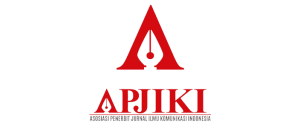MANAJEMEN KRISIS MASALAH SENGKETA LAHAN (Studi Kasus Pada Divisi Protocolaire And Internal Communication PT Krakatau Steel (Persero) Cilegon dalam Kasus Sengketa Lahan Kubangsari antara PT Krakatau Steel (Persero) Cilegon dengan Pemerintah Kota Cilegon)
DOI:
https://doi.org/10.30656/lontar.v3i3.539Abstract
This research is focused to know crisis management strategy at Internal Communication and Protocolaire division at PT Krakatau Steel (PT KS) Cilegon in handling a legal dispute case of Kubang Sari land between PT KS and Cilegon city government, to know the implementation program which are done by Internal Communication and Protocolaire division PT KS, and also to criticize the lackness of crisis management system conducted by Internal Communication and Protocolaire division PT KS. This research is qualitative research. The result of the research shows that the strategy which is used in handling the legal dispute crisis of Kubang Sari land uses social recoveryprogram, and law solution. Social recovery program is a short term program that are focused to solve crisis for public, government, Non Government Organization, mass media, and other stakeholders, to eliminate negative thoughts towards company, to acknowledge the problem that really happen, and to return back the companies image in society, through negotiation, compromize, and lobbying. Then, law solution program tent to handle crisis through law systems. From this research, it can be concluded that PT KS managemet crisis is well enough, but there are still many lackness in applying media relation, and PT KS’s public relation doesn’t have crisis plan in the form of manual book to solve sudden crisis.Â
                                                                                             Â
Keywords: Crisis, Crisis Management, Public Relations
Downloads
Published
Issue
Section
License
By submitting an article to the journal, the author(s) agree to transfer the published article's copyright to the journal, which will act as the publisher. This means the journal will have the right to publish the article in various forms, including reprints. The journal will maintain the publishing rights to the published articles.
In line with the license, authors and third parties (readers, researchers, and others) are allowed to share and adapt the material. In addition, the material must be given appropriate credit, provided with a link to the license, and indicated if changes were made. If authors remix, transform, or build upon the material, authors must distribute their contributions under the same license as the original.






